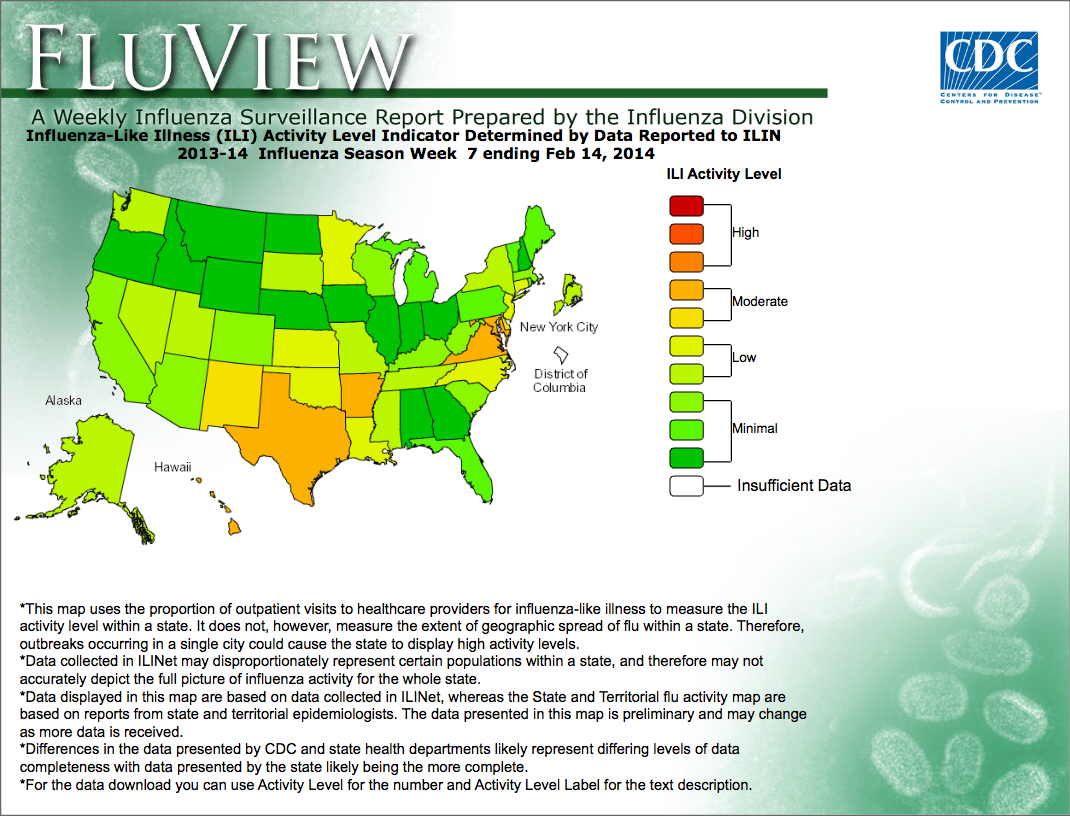
The activity levels for Texas for 2014 has ranged from moderate to high according to the Centers for Disease Control and Prevention’s interactive surveillance report.
EL PASO — Rene Delgado came home on a Saturday afternoon with a sore throat. The next day, his family noticed that he was becoming unresponsive so they took him to see a doctor in Juarez where he was diagnosed with the flu — the H1N1 strain.
He was then taken by ambulance to Del Sol Hospital where he was admitted into the intensive care ward on January 11. He died there three days later.
The civil engineering student at the University of Texas at El Paso was 22 years old.
“We don’t know where he could have gotten it. Everyone remembers my brother just like he was, a caring lovable guy who you could always count on,” said Val Delgado.
This flu season (2013-2014), according to the El Paso Health Department, 3,620 cases have been reported in the El Paso area as of February 27 with 17 deaths blamed on the disease. Five deaths were reported during the 2012-2013 flu season.
This area has not seen these many flu deaths since the swine flu pandemic of 2009 when 17 persons died of the disease.
The dead included one young male, seven middle-aged men, four elderly men, three middle-aged women and two elderly women. Only one of them was vaccinated, according to the El Paso Health Department.
“This flu season, Influenza A H1N1 is affecting the young and middle-aged adult more severely,” said Yvonne Vasquez, Epidemiologist at the El Paso Health Department.
And flu season is not over. According to local health officials, the number of cases is expected to rise. Two types of influenza are taking their toll here — Type A and Type B.
“Influenza Type A can affect people, birds, pigs, horses and other animals,” according to Vasquez, “whereas, Type B can only be found in humans.”
Data gathered by El Paso Health Department lead epidemiologist, Fernando Gonzalez showed that, “There has been a spike in flu cases, especially Type B, which have nearly quadrupled from the week before with more than 150 cases.” A second spike occurred during the last week of January, where 400 new cases were reported and 89 per cent of the cases were Type A. Type A is this season’s predominant influenza virus.
Both epidemiologists stress the need for prevention in the community and said that the influenza vaccine is the best option to avoid the flu. Many facilities offer the flu vaccines in the El Paso area, including The Department’s Immunization Program.
The El Paso Health Department also wants the community to follow the “4 C’s” to effectively prevent the spread of the flu virus. The “4 C’s” consist of clean, cover, contain and call:
• CLEAN — Wash your hands often. Scrub your hands for at least 30 seconds with soap and water, or use an alcohol-based hand cleaner.
• COVER — Cover your cough. Use a tissue to cover your mouth and nose when you cough or sneeze. Don’t have a tissue? The crook of your elbow will do.
• CONTAIN — Contain germs by steering clear of others who are sick. If you do get sick, stay home until you’re well again, so you don’t spread more germs.
• CALL — Call or see your doctor if you or your child has a temperature higher than 100 degrees.


I just got diagnosed with influenza A. I believe I’ve had it for a while now. The catch is I never had a fever. That is apparently common for adults.